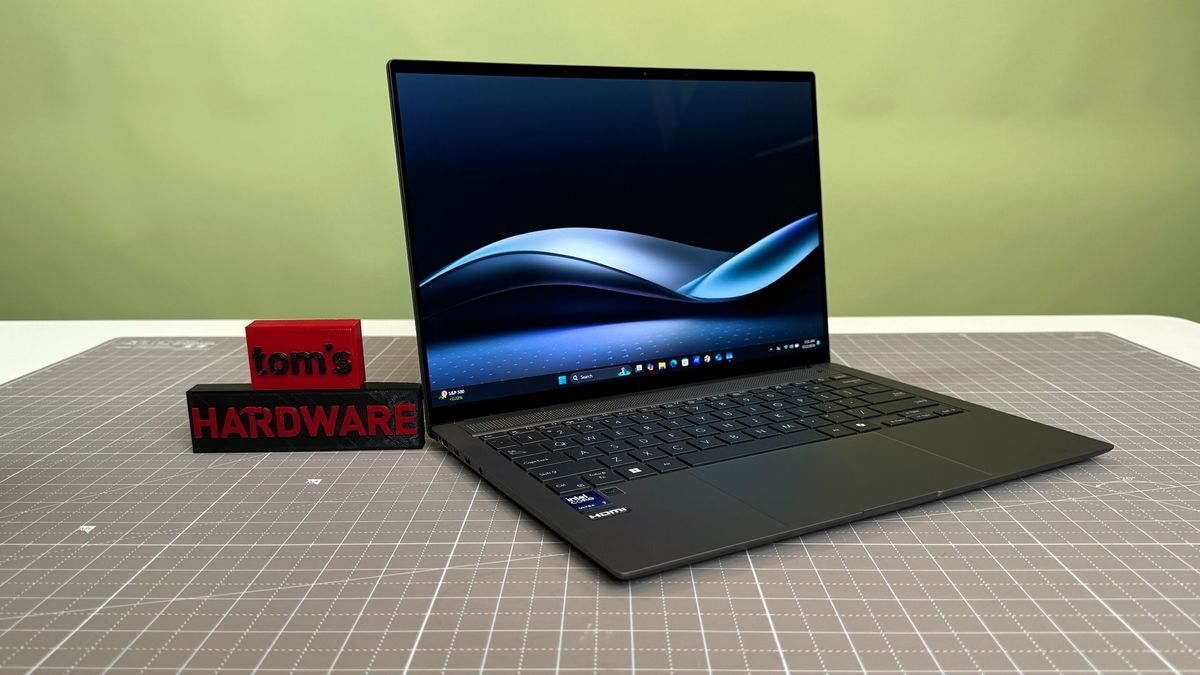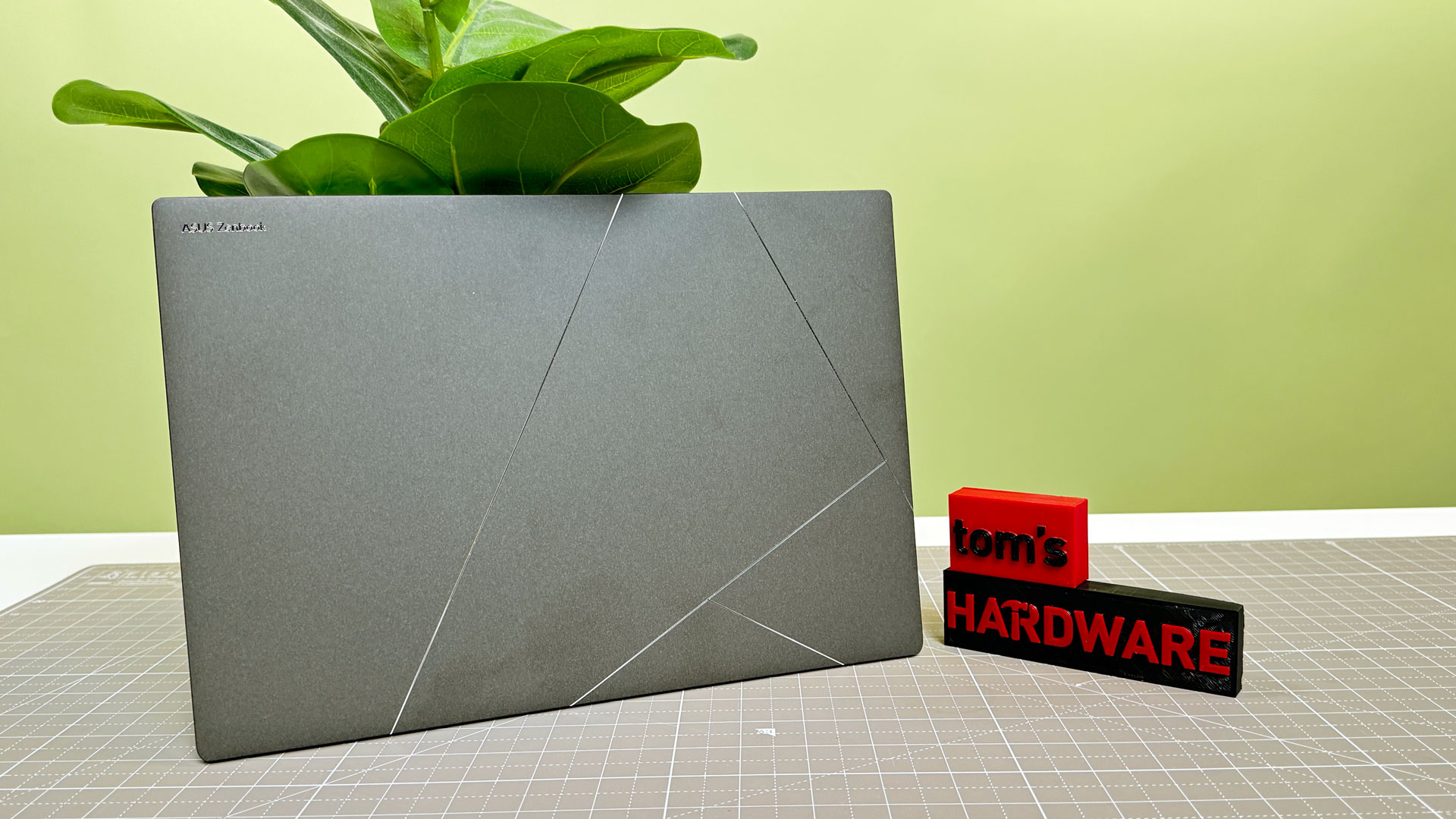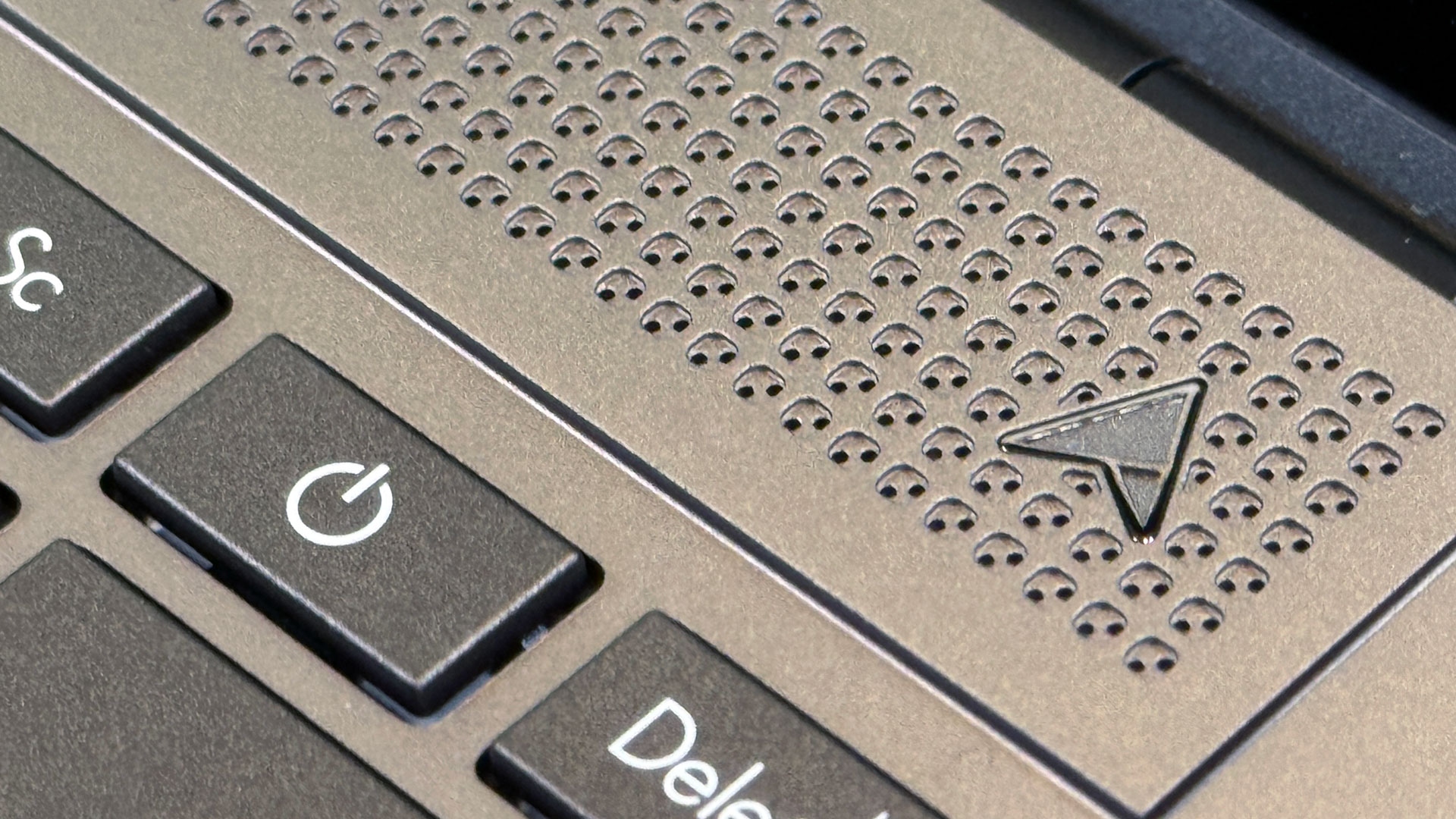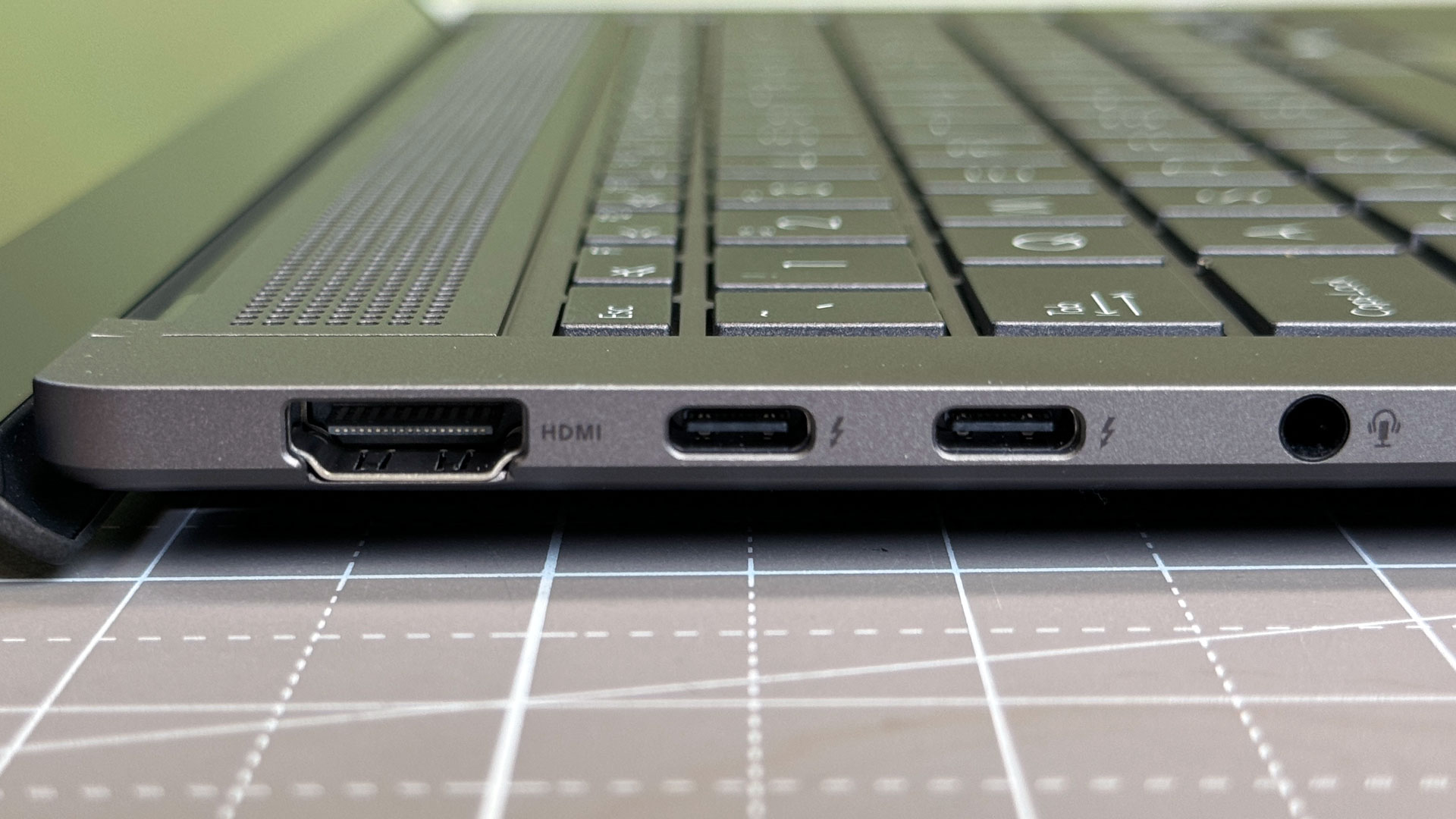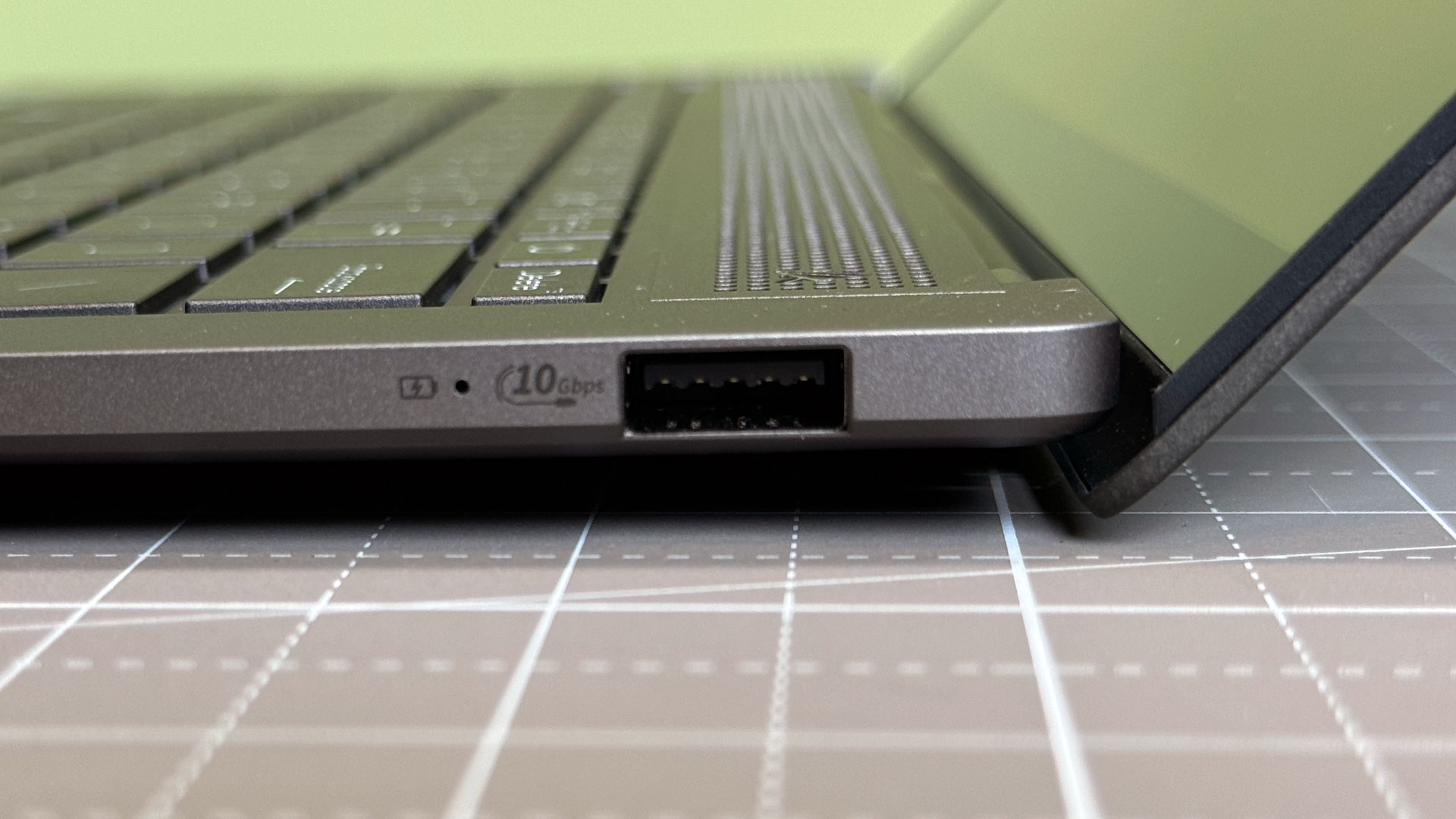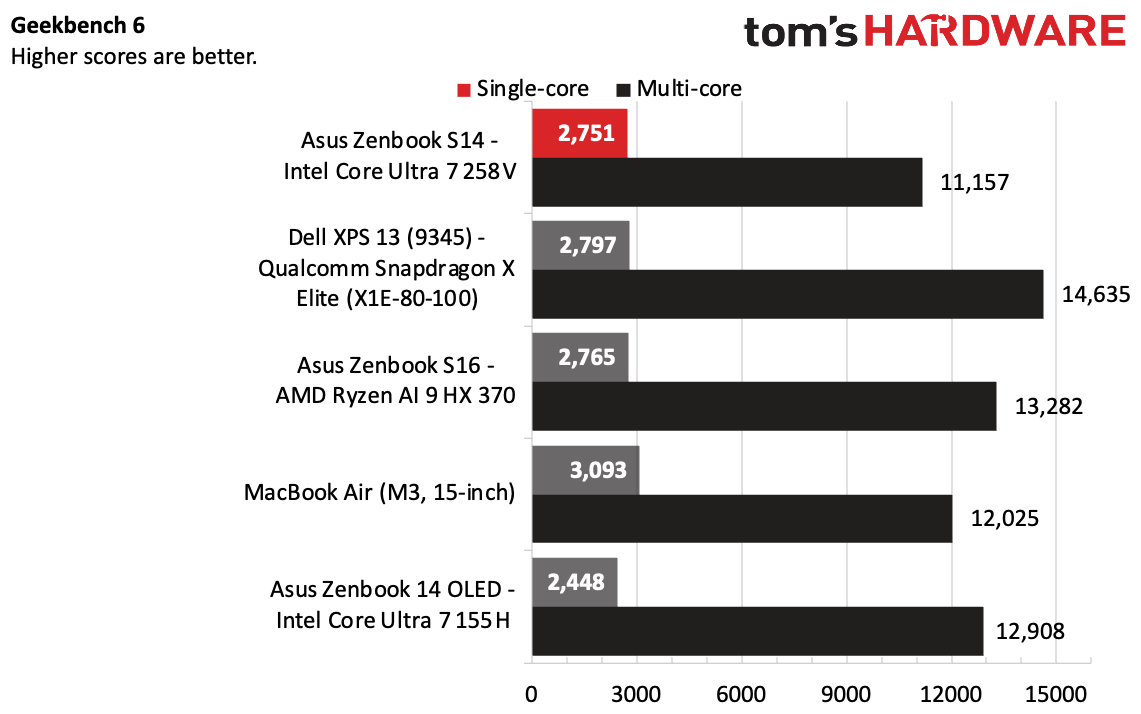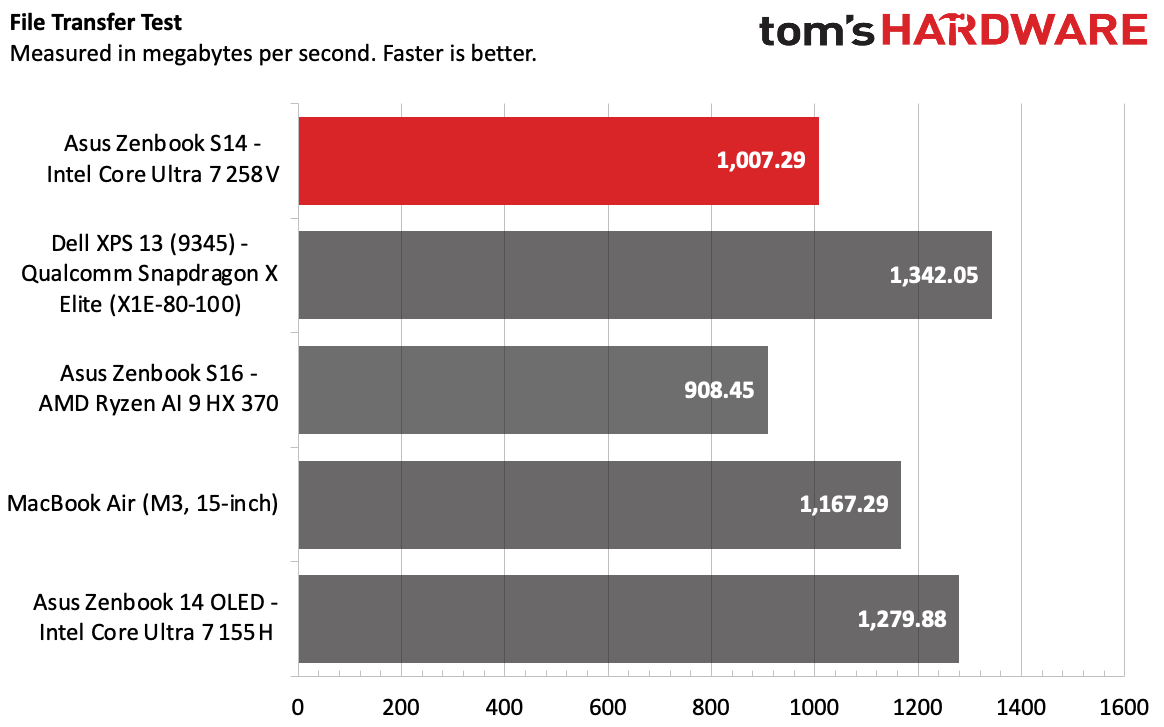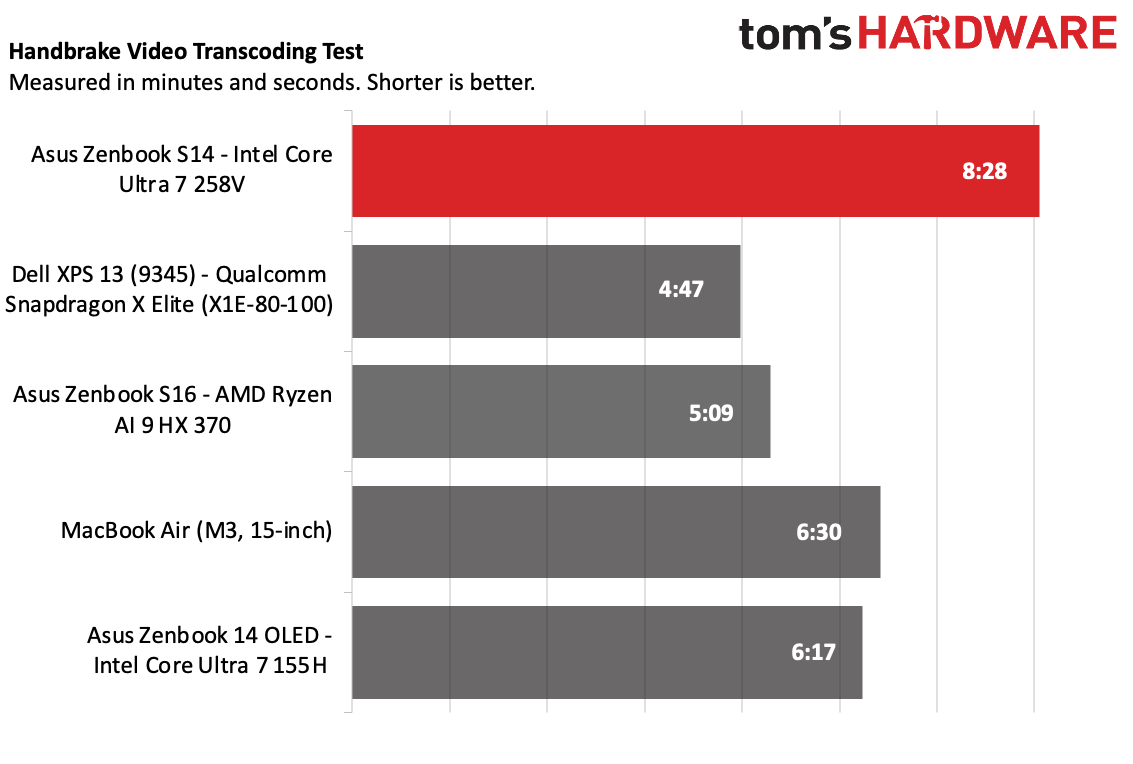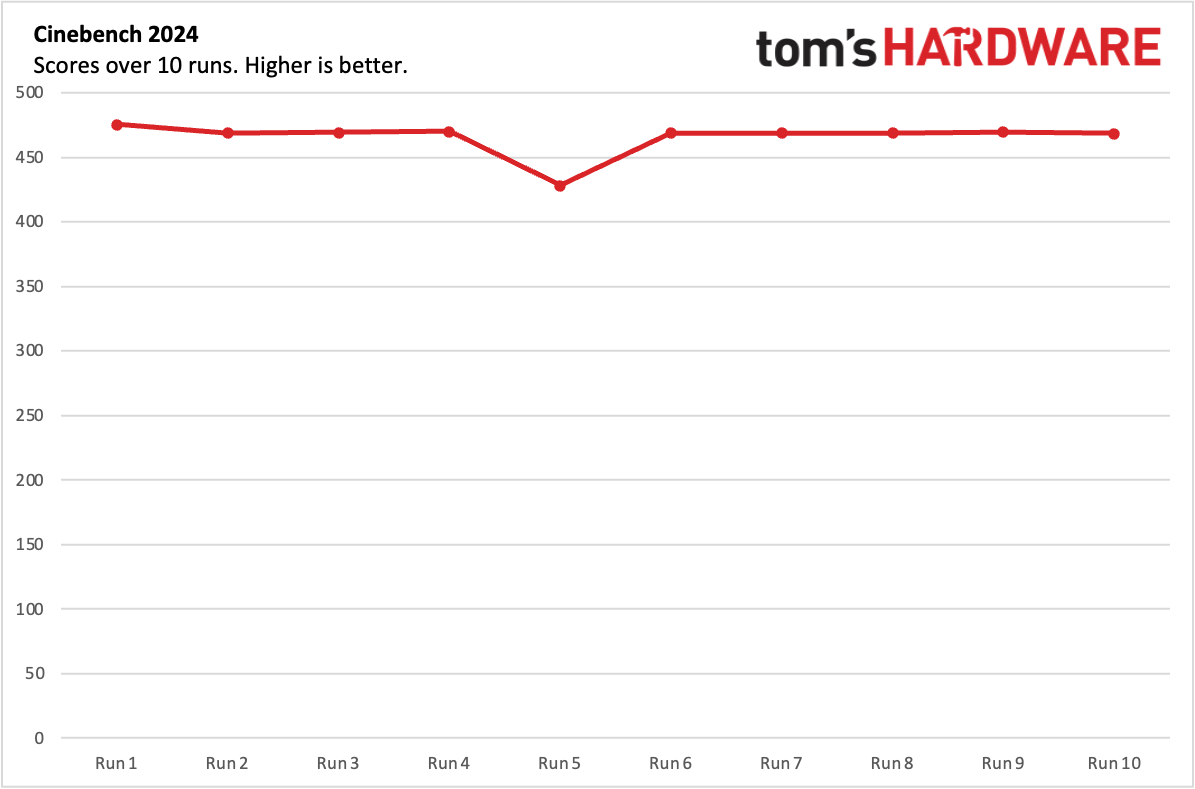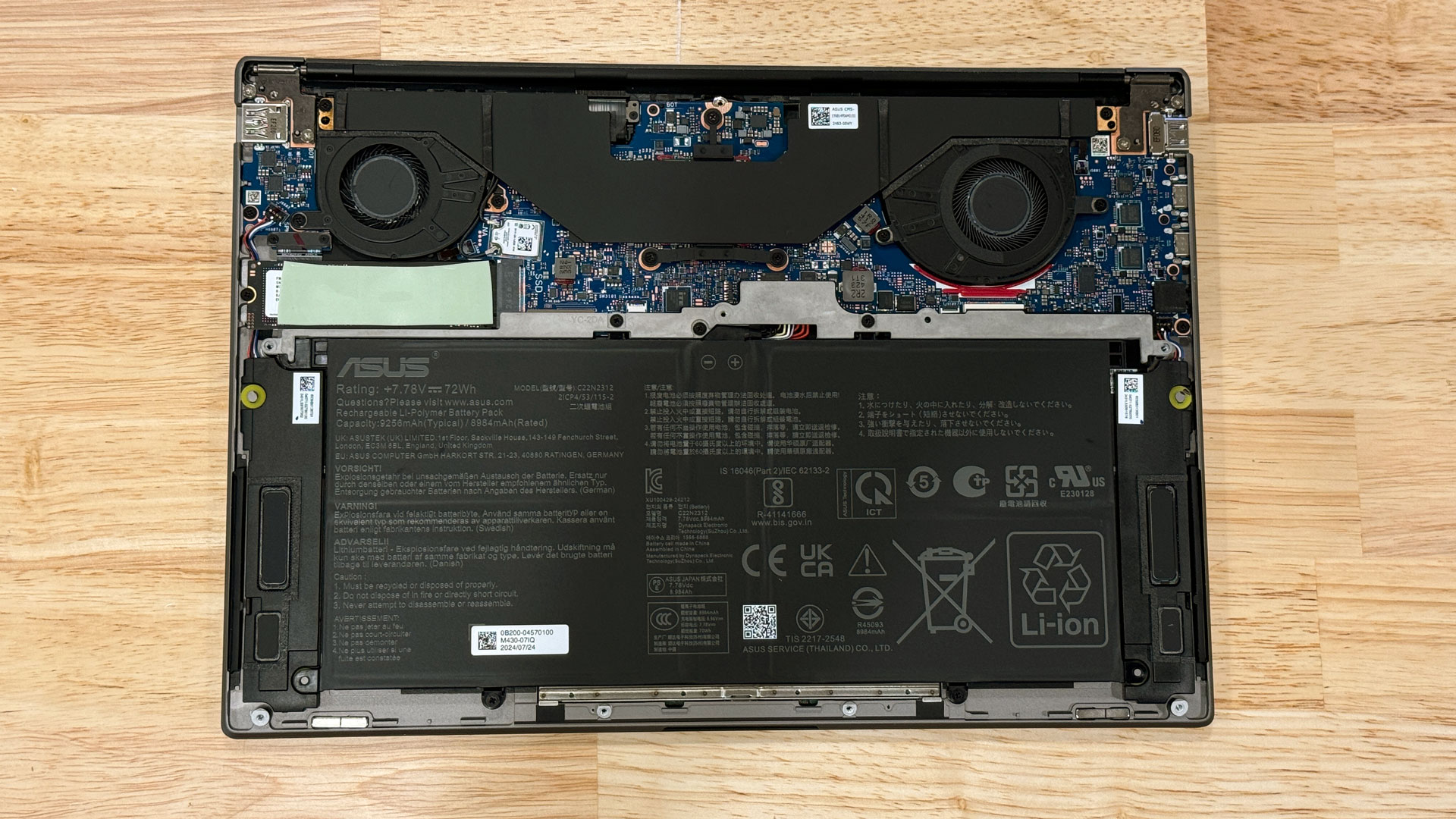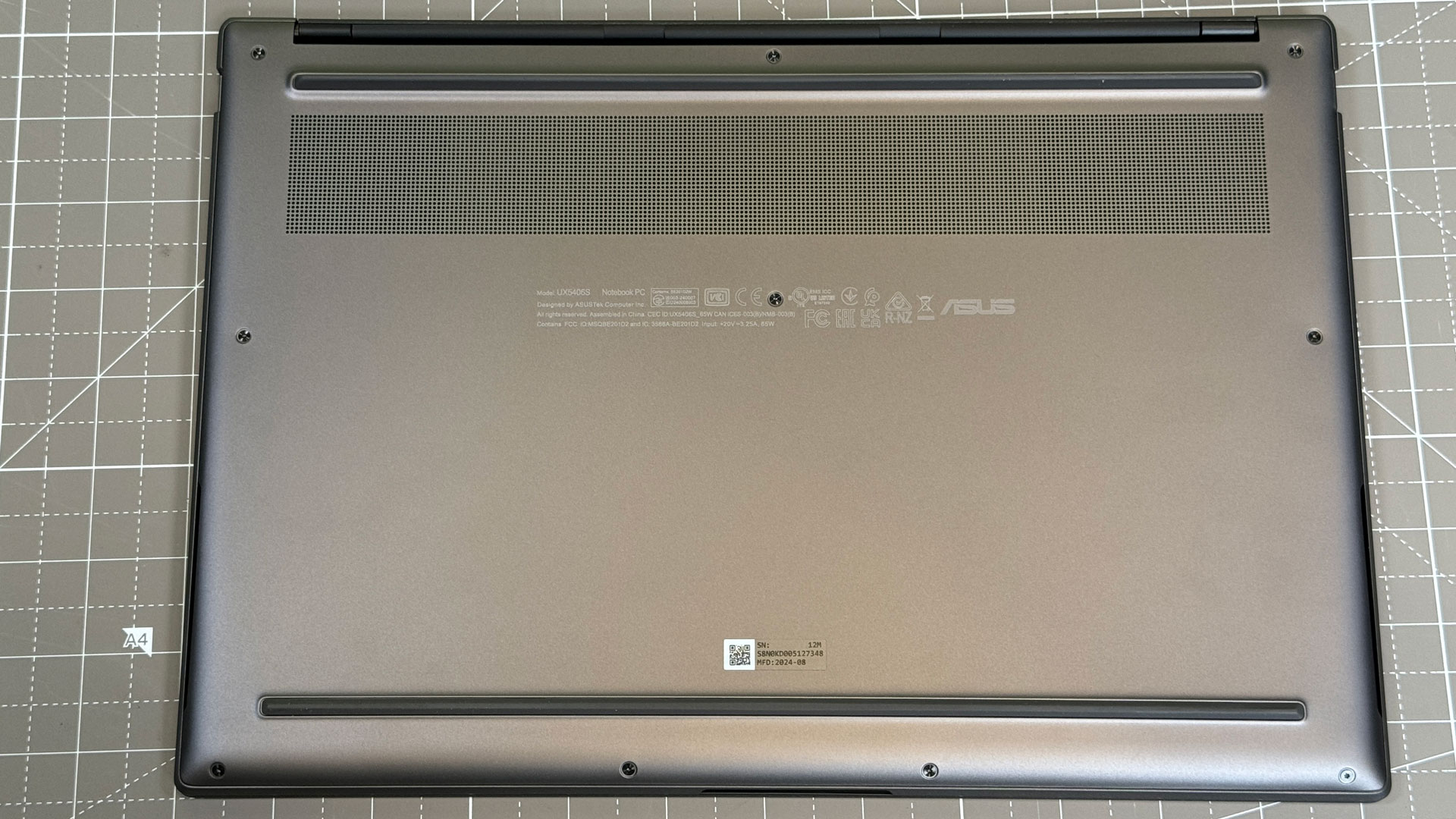After years of the component industry taking on Moore’s Law with extra cores and threads, higher clocks, and often increased power consumption, Intel is going for efficiency with its Intel Core Ultra 200 “Lunar Lake” chips. That’s following in the footsteps of some of the best ultrabooks, which have seen increased battery life as several laptop manufacturers have started adding Arm chips to their lineups. Among the first devices to get Intel’s new chips, the Asus Zenbook S14 is a lovely PC with slightly more battery life than we saw last year.
That makes Asus’ ultraportable good for people who want an x86 notebook — and all of the Windows application compatibility that it brings — and want it to last most of the day on a charge. But we also found in testing that this laptop was weaker in multi-core performance and in some more intense tasks.
Asus could also do more to make the Zenbook S14 feel more premium, like removing account and subscription requirements on its software and improving the webcam. But between the beautiful design and Intel’s improved efficiency, there’s plenty to like if you don’t mind giving up some performance.
Design of the Asus Zenbook S14
Asus sticks with a tried and true design here, and I can’t blame the company. The Zenbook S14, like the AMD-based Zenbook S16 we reviewed recently, is a stunner, with a “Ceraluminim” lid that is clunky to say but pretty to look at. The lid really does feel a bit like pottery, just not as fragile. The gray coloring does, however, attract fingerprints. A series of slick lines make Asus’ Zenbook logo in silver. (Our configuration will come with a white chassis if you buy it. The gray chassis will sell in a Best Buy configuration with a lower-end version of the processor.
With the lid open, the Zenbook looks more like a standard laptop, with thin bezels around the display and a dark gray aluminum chassis with little flex. A series of vents above the keyboard is almost artistic, with two layers of holes drilled in an intricate pattern.
Along the laptop’s thin sides, Asus managed to cram in some impressive ports. The left side has two Thunderbolt 4 ports over USB Type-C, a 3.5 mm headphone jack, and a full-size HDMI 2.1 port — just barely fitting on the thickest edge. On the left side, there’s a single USB 3.2 Gen 2 (10Gbps) Type-A port.
Measuring in at 12.22 x 8.45 x 0.51 inches and weighing 2.65 pounds, the Zenbook is compact and light, and I rarely noticed it in my work bag. The Dell XPS 13 (9345) is thicker at 0.60 inches and has a smaller screen. The 15-inch MacBook Air is 2.7 pounds and thinner at 0.44 inches. The Asus Zenbook S16 is 3.31 pounds (but hey, it’s bigger) and 0.47 inches thick.
Asus Zenbook S14 Specifications
| Procesor | Intel Core Ultra 7 258V |
| Graphics | Intel Arc 140V |
| NPU | Intel AI Boost (47 TOPS) |
| Memory | 32GB LPDDR5X-8533 (on-chip) |
| Storage | 1TB PCIe Gen 4 SSD |
| Display | 14-inch, 2880 x 1800, 120 Hz, touch screen |
| Networking | Intel Wi-Fi 7 BE201, Bluetooth 5.4 |
| Ports | 2x Thunderbolt 4 over USB Type-C, USB 3.2 Gen 2 Type-A, HDMI 2.1, 3.5 mm headphone jack |
| Camera | 1080p, IR |
| Battery | 72 WHr |
| Power Adapter | 65W |
| Operating System | Windows 11 Home |
| Dimensions (WxDxH) | 12.22 x 8.45 x 0.51 inches (310.3 x 214.7 x 12.9 mm) |
| Weight | 2.65 pounds (1.2 kg) |
| Price (as configured) | $1,499.99 |
Productivity Performance on the Asus Zenbook S14
The Zenbook S14 is the first laptop we’re testing with Intel’s new “Lunar Lake” architecture. It’s using the Intel Core Ultra 7 258V, featuring cores (as all of the current Lunar Lake chips do). It’s a mix of four performance cores and four low-power efficient cores, with a max turbo frequency of 4.8 GHz (3.7 GHz on the LPE cores). Intel has suggested that Lunar Lake’s architectural changes make it the fastest single-core performers on the market, while also pushing power efficiency. Asus runs Lunar Lake with a “standard” PL1 Max of 22W.
Here, we’re comparing the Lunar Lake chip to a number of contemporaries: the Qualcomm Snapdragon X Elite (X1E-80-100) in the Dell XPS 13 (9345); the AMD Ryzen AI 9 HX 370 in the Asus Zenbook S16; Apple’s M3 in the 15-inch MacBook Air; as well as a gen-on-gen comparison with last year’s Asus Zenbook 14 OLED, which used an Intel Core Ultra 7 155H “Meteor Lake” CPU.
In our testing, the Zenbook S14 was largely in line with its competitors in single-core performance, and fell behind in multi-core.
On Geekbench 6, the Zenbook S14 with Lunar Lake achieved a single-core score of 2,751 and a multi-core score of 11,157. That single-core is largely in line with the XPS 13, Zenbook S16, and a bit behind the M3 (3,093). The multi-core score was the lowest of the bunch at 11,157 (the next lowest, the M3, is also an 8-core CPU).
On our file transfer test, the Zenbook copied 25GB of files at a rate of 1,007.29 MBps. That’s faster than the Zenbook S15 (908.45 MBps), but the XPS, MacBook Air, and last year’s Zenbook were faster.
Where Intel’s efficient chips really showed their greatest weaknesses was on Handbrake, which we use to transcode a video from 4K to 1080p. It took the Zenbook S14 with the 258V 8 minutes and 28 seconds to complete the test. That’s almost two minutes longer than the MacBook Air (6:30), while Meteor Lake was faster at 6:17. The Qualcomm Snapdragon X Elite in the Dell XPS 13 (9345) led the pack at 4:47.
We also ran our typical stress test on the Zenbook S14, running Cinebench 2024 in a loop ten times. It was largely consistent, with scores in the high 460’s and low 470’s, with the exception of a dip to 428.19 at run 5. Intel’s P cores ran at an average of 2.2 GHz, while the E cores ran higher, at 2.6 GHz during this test.
NPU and AI
The NPU on the Intel Core Ultra 7 258V is specced at 47 TOPS, just surpassing the 45 TOPS on the Snapdragon X Elite and Plus, but lower than the 50 TOPS on the AMD Ryzen 9 AI HX 370. All of these laptops have hit the target for Microsoft’s Copilot+ features — Intel and AMD’s machines are waiting on updates to add those features.
Here’s the rub: While you get more and more TOPS, it’s unclear when people will see tangible benefits. Sure, it’s great that Windows Studio effects don’t hog your CPU. But there aren’t a ton of applications using the NPU that are particularly useful. We’re still looking into the best way to report AI performance in laptop reviews, but for most people, a few TOPS one way or the other isn’t going to affect the way you use your machine.
Display on the Asus Zenbook S14
Asus packed a 14-inch, 2880 x 1800 display into the Zenbook S14. While some will wonder about the point of packing so many pixels in such a dense display, it’s hard to argue that this is a good-looking screen. It goes up to 120 Hz, with support for dynamic refresh rates.
When I used the laptop to watch the trailer for Venom: The Last Dance, the Zenbook showed off vivid colors particularly well, including the orange lighting on the Las Vegas Strip, stereotypical blue sci-fi lighting in a lab, and green grassy patches in a desert.
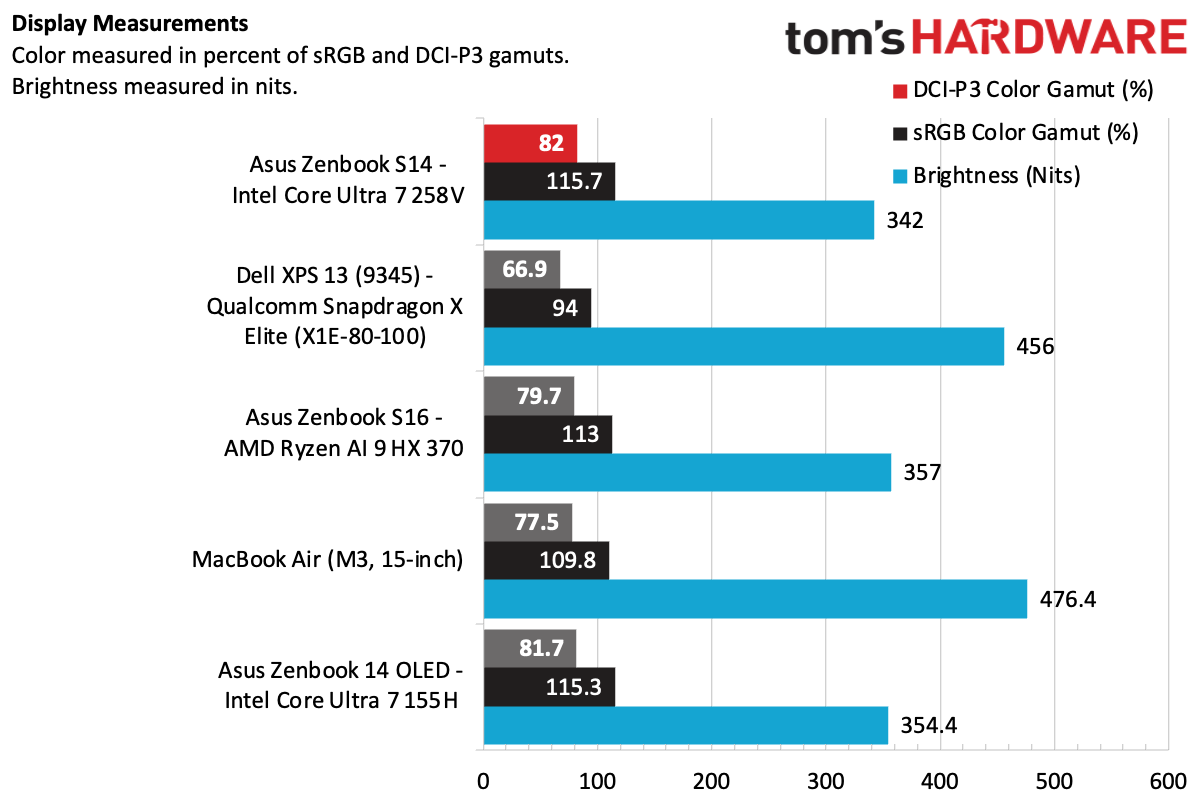
The Zenbook covers 82% of the DCI-P3 gamut and 115.7% of the DCI-P3 color space, which is pretty close to what the Zenbook 14 OLED offered last year. Those two screens offered the best gamut coverage in our test group, but they were behind in brightness.
The new Zenbook measured 342 nits (down from 354 nits on last year’s 14-inch Zenbook and 357 nits on the S16). The Snapdragon-based XPS 13, with a 1080p screen, reached 456 nits, while the MacBook Air reached 476.4 nits.
Keyboard and Touchpad on the Asus Zenbook S14
Asus’ keyboard has just 1.1 mm of key travel. It’s not the snappiest around, but it has a little bit of bounce and I was generally able to get used to it. On the monkeytype typing test, I hit 116 words per minute with a 2% error rate, which is pretty standard for me.
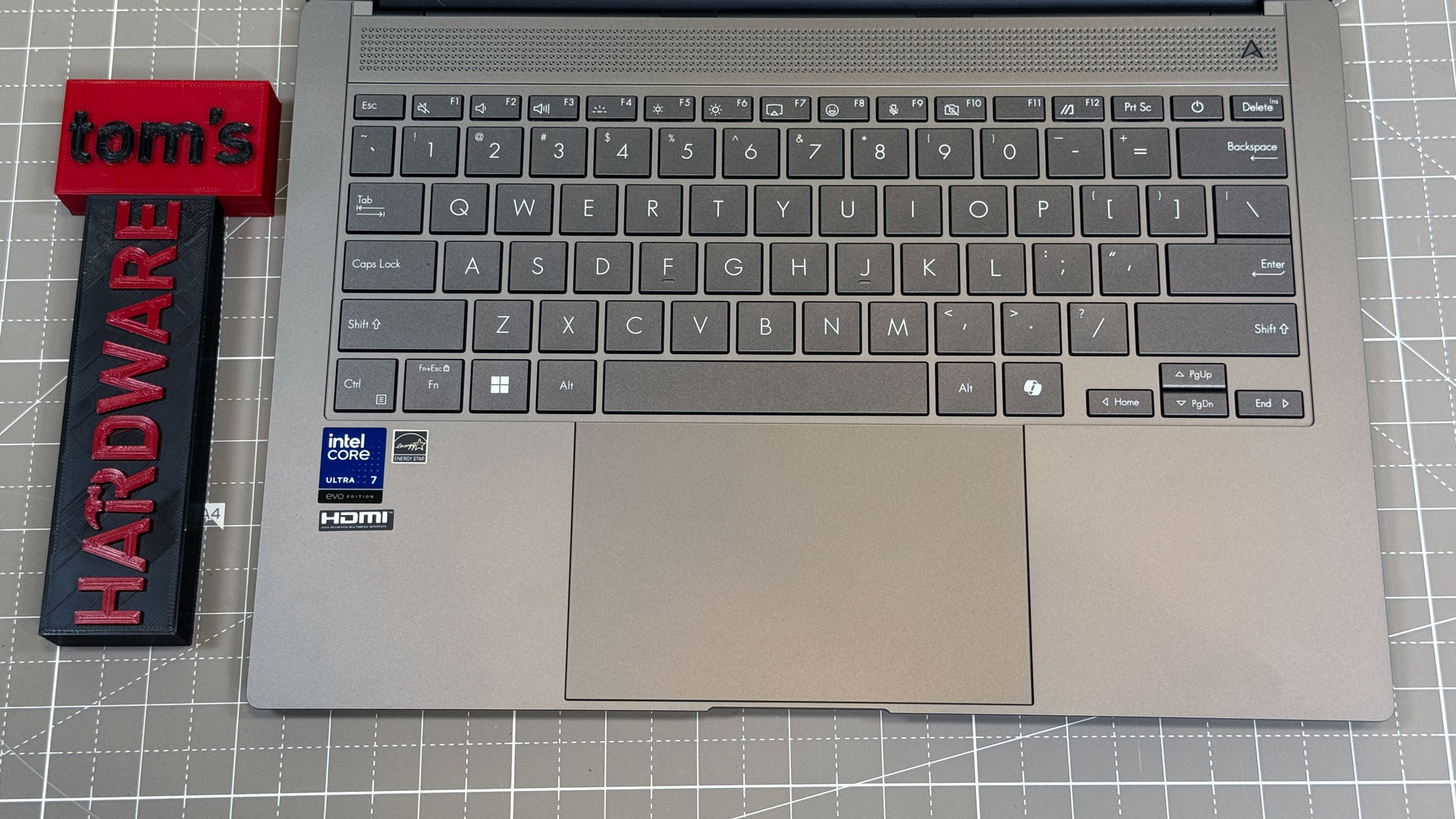
While I wish Asus went with a full suite of media keys (it could ditch, say, the dedicated emoji key), there’s little else to argue with on the layout.
The touchpad takes up as much vertical space as Asus could possibly give it: it goes all the way from the edge of the palmrest to just under the space bar. I wish Asus would switch to haptics, but this click mechanism feels just fine here.
All of the typical Windows gestures work well enough, and Asus threw in some of its own. You can swipe up and down alongside the right side of the touchpad to adjust screen brightness or to the same on the left side to tweak volume. If you swipe along the top while a video plays, you can scrub the timeline in 5-second increments forward or backward. I initially worried that these gestures would get in the way of using the device, but I mostly just forgot they existed at all.
Audio on the Asus Zenbook S14
The speakers on the Zenbook S14 pack some surprising power considering the laptop’s diminutive size, but there are still some sacrifices. As I sat in our lab space, James Bay’s “Up All Night (with The Lumineers and Noah Kahan) started off with some impressive bass for such a slim notebook (the impressive bit being that I noticed the bass at all), along with loud, powerful guitars and clear singing vocals.
That being said, some other instruments, including tambourines and drums, got a bit lost in the mix, and the down-firing speakers means you’ll get much better audio when on a desk or other hard surface than, say, computing in bed or on the couch.
I was able to make adjustments using the Dolby Access app (or through duplicate functionality in the MyAsus software) and switch between music, movie and game modes. IN most instances though, I felt the music default was the best.
Upgradeability on the Asus Zenbook S14
It’s not too hard to get into the Asus Zenbook S14, but there’s not much to repair or upgrade in there. There are 10 Torx screws on the bottom lid, in two sizes, so be sure to keep them organized. Once those are removed, you can easily get the bottom case off with a pry tool.
The tiny motherboard only has room for a single m.2 2280 SSD, which you can replace if need be. The battery is also accessible. But the wireless card is soldered to the board, and the RAM is now on-chip as part of Intel’s Lunar Lake architecture, so there’s no way to upgrade it down the line.
Battery Life on the Asus Zenbook S14
We expected long battery life on the Asus Zenbook S14. After all, Intel is making some striking claims about Lunar Lake’s efficiency. On our battery test, the Zenbook S14 for an average of 14 hours and 7 minutes.
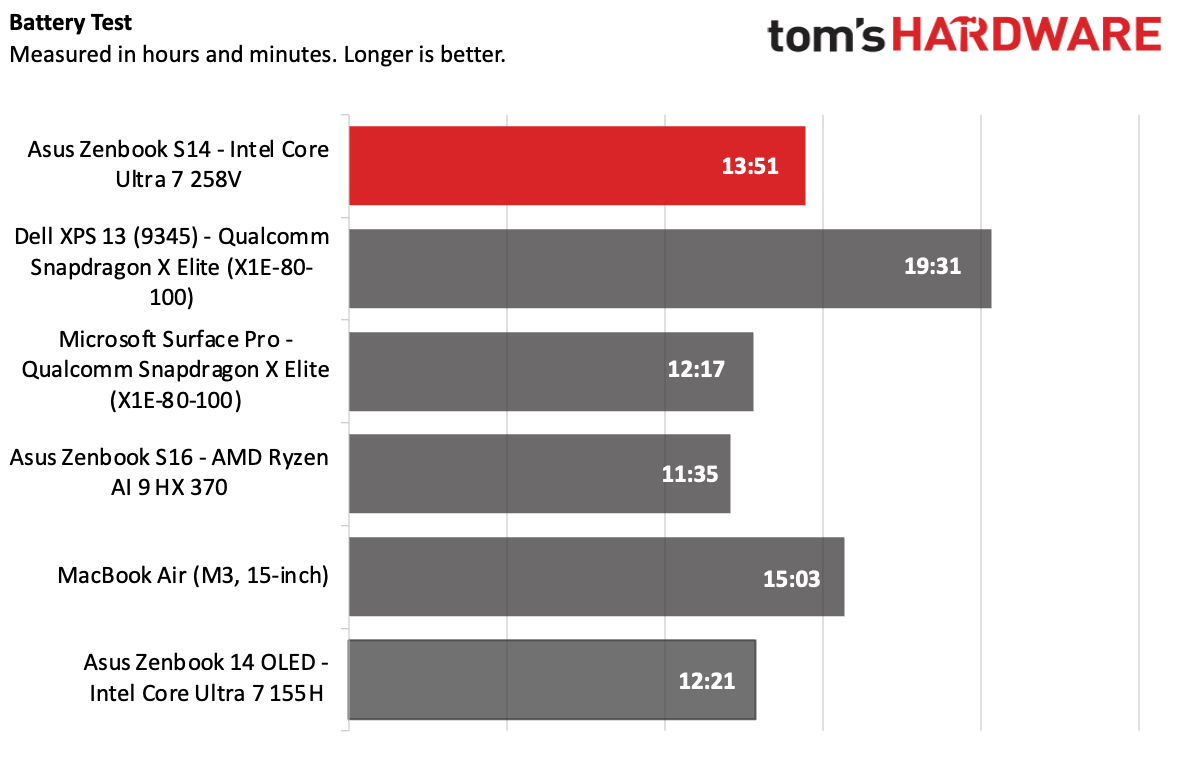
That’s slightly longer than the Meteor Lake-based Asus Zenbook 14 OLED from last year which ran for 12 hours and 21 minutes. It’s also longer than the Asus Zenbook S16 running the AMD Ryzen AI 9 HX 370.
But this latest x86-based laptop didn’t always beat its Arm-based competitors. In our chart, the Dell XPS 13 (9345) and a Microsoft Surface Pro each sport a Qualcomm Snapdragon X Elite (X1E-80-100). That XPS 13 — which had the longest-lasting battery of the group running for 19:31 — has a smaller 55 WHr battery, but the ace in its sleeve may be the fact that it also has a 1080p, LCD screen that sips power in comparison. The Surface Pro has an OLED display like the Zenbook, with a slightly higher resolution of 2880 x 1920. That lasted for 12 hours and 17 minutes, possibly because of its diminutive 53 WHr battery.
The MacBook Air with M3 also beat the Zenbook, running just over 15 hours. That laptop also doesn’t have an OLED screen, but has a high resolution of 2880 x 1864.
Heat on the Asus Zenbook S14
During our Cinebench 2024 stress test, the Zenbook got a bit warm, but not too toasty to use. The center of the keyboard reached 106.8 degrees Fahrenheit, while the touchpad was 92 F. (The latter is toastier than many laptops, but not obscenely so). The bottom of the notebook hit 119.6 F at its hottest point, at the exhaust vent.
Webcam on the Asus Zenbook S14
The camera on the Zenbook S14 disappointed me. The 1080p lens was extremely color accurate in great conditions, with lots of natural light coming in through nearby windows. My eyes appeared the right shade of blue, and every book on a bookshelf behind me had the right color cover. But images had grainy backgrounds and overly highlighted imperfections in my skin while leaving details in my hair unfocused and blurry. It’s OK in a pinch, but if you’re using the Zenbook S14 with an external keyboard and monitor, you may want to consider one of the best webcams.
Software and Warranty on the Asus Zenbook S14
Asus has four main pieces of software on the Zenbook S16. Some are more useful than others, but they have a troubling trend: asking for accounts.
The four big ones are MyAsus (for system settings and warranty); ScreenXpert (to manage windows across displays, including external monitors); GlideX (to use a phone or tablet as an additional screen, or to mirror your phone’s screen on the laptop); and Story Cube (a media hub to collect photos and videos by category, location, and people).
MyAsus pushes for an account (though you can skip past it), and GlideX is a subscription service with a trial that has ads. Once these preinstalled apps start asking for money, they feel more like bloat.
Otherwise, there’s a few Intel utilities and Microsoft’s usual Windows Store apps pinned to the Start Menu. Asus also has some pre-set bookmarks in the Edge browser, including two bookmarks to Asus’s software webpages and one to McAfee LiveSafe (which wasn’t, thankfully, installed on our review unit).
Asus sells the Zenbook S14 with a one-year warranty.
Asus Zenbook S14 Configurations
We reviewed the Asus Zenbook S14 with an Intel Core Ultra 7 258V, 32GB of RAM, and 1TB SSD. This configuration costs $1,499.99 direct from Asus. While our unit was gray, Asus will sell this configuration in white.
At Best Buy, there’s a $1,399.99 configuration with Core Ultra 7 256V and 16GB of RAM, but is otherwise the same, except it comes with the gray chassis.
Bottom Line
The Asus Zenbook S14 is about as beautiful as Windows PCs get these days. It’s thin with a premium build, and I’m pretty into the aluminum-ceramic combo, even though it gets smudgy. Asus also managed to pack a surprising amount of ports into this thin design.
To go with that portability, Asus opted for the Intel Core Ultra 7 258V. While almost 14 hours on our battery test is nothing to shake a stick at, it’s not the level of longevity we were hoping for. We saw both Apple and Qualcomm beat it in our comparison systems. That being said, one laptop doesn’t define an entire chip or platform, so we’re curious to see how other Lunar Lake systems stack up..
Single-core performance seems good enough for most tasks, and on par with the competition. But if you’re considering anything that heavily uses all available cores, you may want to consider something a bit more powerful.
With a notebook this small and thin, the Zenbook S14 is best for simple, straightforward tasks. It’s portable and lasts a long time on a charge, but you’ll have to keep expectations in check if you do intense work.

